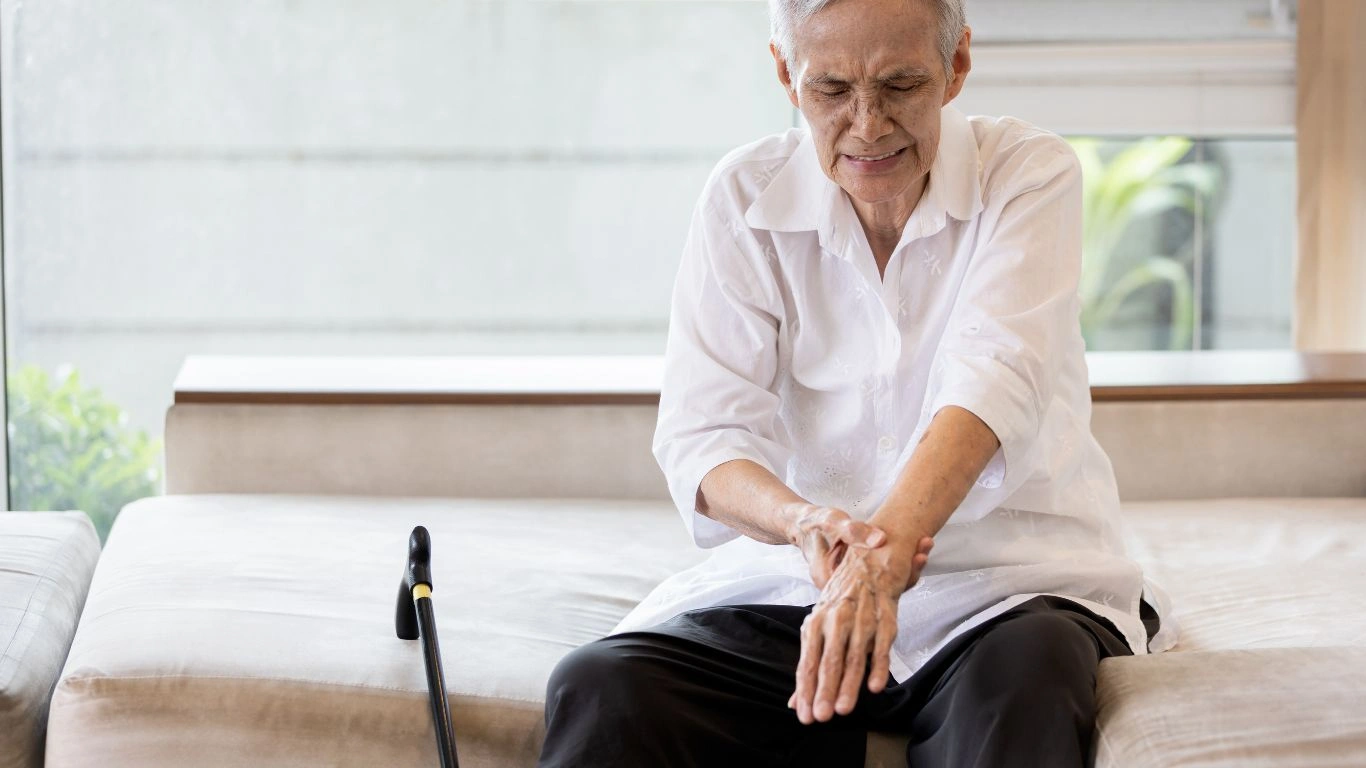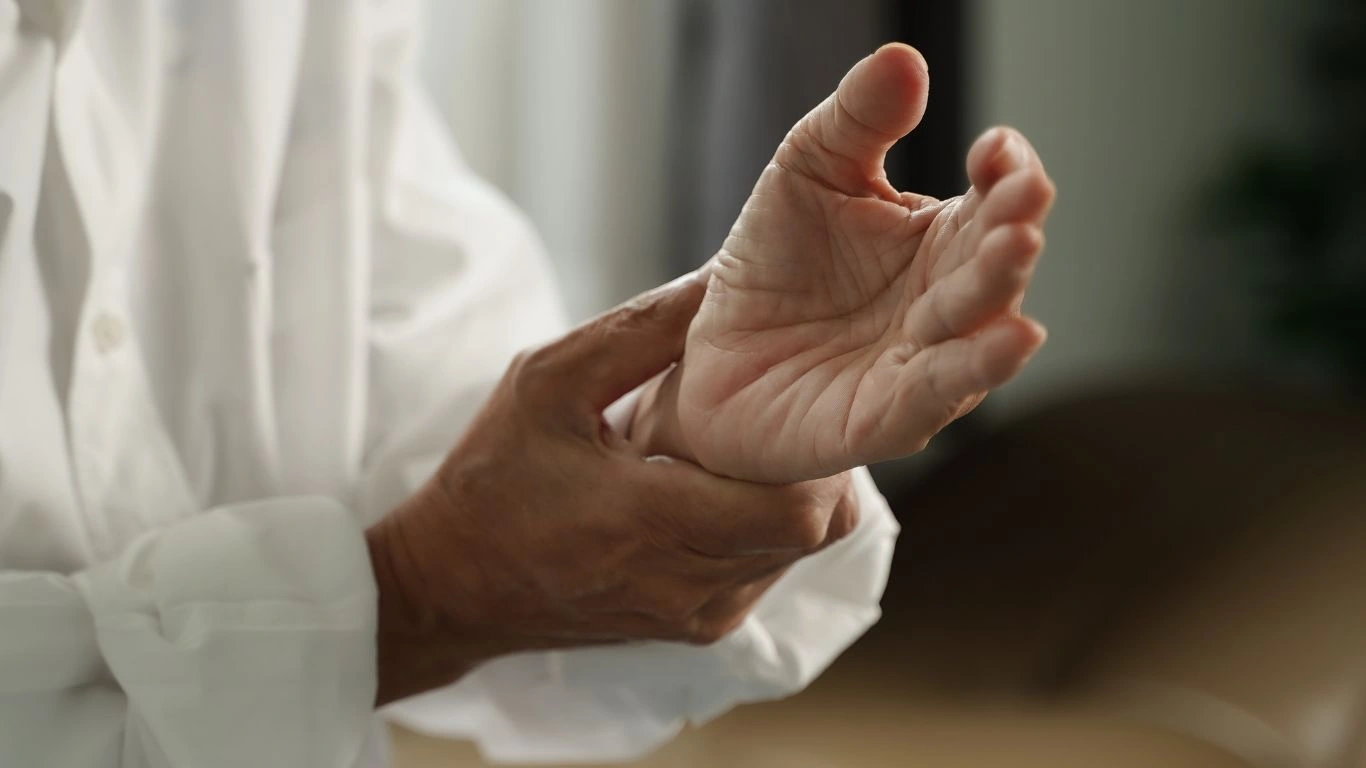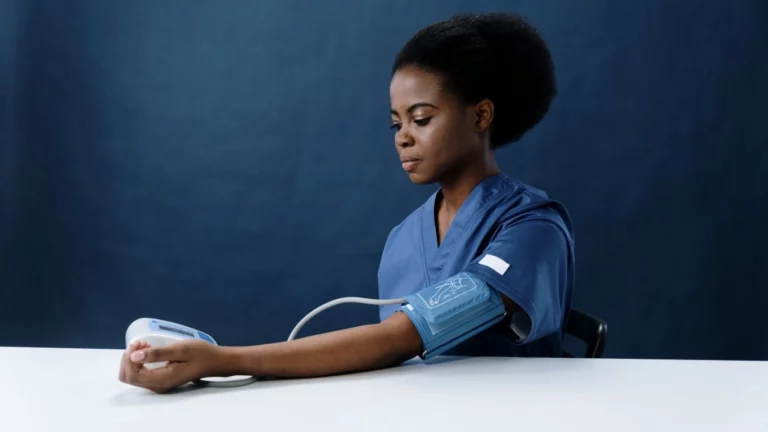Best Rheumatoid Arthritis and Depression Treatments That Actually Work
Living with rheumatoid arthritis is tough enough, but throw depression into the mix, and things get a whole lot heavier. As a Rheumatology Nurse Practitioner, I’ve seen firsthand just how much these two conditions like to team up and wear people down. When we talk about rheumatoid arthritis and depression treatments, we’re not just talking pills and prescriptions—we’re talking real-life strategies, daily mindset shifts, and support systems that make it all manageable. Let’s get into it, because there’s more to this conversation than what you typically hear in a 10-minute doctor’s visit.
Understanding the Link Between Rheumatoid Arthritis and Depression

First, let’s call it what it is—rheumatoid arthritis (RA) is an exhausting, chronic autoimmune disease that doesn’t just attack your joints. It affects your energy, your sleep, your ability to do simple daily tasks, and yes, your mood. After working with so many patients, I’ve learned that it’s not uncommon for people with RA to also experience depression. In fact, studies suggest that nearly 40% of RA patients battle some form of depression. That number might seem high until you think about the constant, daily toll of joint pain and fatigue.
RA flares can feel like walking through quicksand while your joints are on fire. Imagine trying to stay upbeat and positive when getting out of bed is a full-blown event. Yeah—it’s rough. And the kicker? Depression can actually worsen pain perception, making RA feel even more intense. It’s a vicious cycle that a lot of people don’t talk about enough.
Why Depression Often Goes Undiagnosed in RA Patients
This is something that gets to me. So many patients are laser-focused on the physical pain that the emotional side quietly simmers in the background. Sometimes they don’t even realize they’re depressed. Other times, they feel guilty for feeling low—like they “should” be stronger. But let me tell you something from the front lines: feeling down doesn’t make you weak. It makes you human.
In my clinic, I make it a point to ask patients about their mental health just as much as their joint stiffness. One woman told me she thought she was just “tired all the time” from the RA, but after we dug deeper, she admitted she hadn’t laughed in months and was withdrawing from her family. We got her connected to the right resources, and guess what? Her energy improved—and so did her joint pain. That’s the power of treating the whole person, not just the diagnosis.
How Chronic Pain Fuels Mental Health Struggles

Pain doesn’t just live in the body—it settles into your headspace, too. And with RA, pain is persistent. It doesn’t take a day off. When you’re constantly hurting, it wears you down emotionally. It changes the way you think, sleep, eat, and interact with the world. Over time, your brain starts to adapt to this new “normal,” and not in a good way.
Chronic pain alters brain chemistry. It lowers serotonin and dopamine—those feel-good neurotransmitters—and increases stress hormones like cortisol. What does that mean in everyday terms? You feel more anxious. More irritable. Less hopeful. Less motivated. And this isn’t just a temporary mood. It becomes a pattern unless you actively intervene.
Signs You Might Be Dealing with Depression Alongside RA
If you’re wondering whether what you’re feeling is just RA fatigue or something deeper, here are a few signs that depression might be tagging along for the ride:
- Loss of interest in things you used to enjoy
- Withdrawing from friends or family
- Changes in appetite or sleep
- Feeling hopeless or worthless
- Trouble concentrating or making decisions
Even if just a couple of those feel familiar, it’s worth having a conversation with your provider. Don’t wait for a full-blown crisis to seek help. Early recognition makes a world of difference.
Holistic Approaches to Managing Both RA and Depression

Let’s talk about what’s actually working for folks managing both RA and depression—because meds alone aren’t the whole story. And as someone who sees the day-in, day-out battles, I can say that multi-layered treatment plans make the biggest difference.
Medications That Do Double Duty
Some treatments prescribed for RA actually have mood-boosting benefits, too. For example, certain biologics help reduce systemic inflammation, which can also alleviate some depressive symptoms. On the flip side, antidepressants—like SSRIs or SNRIs—not only improve mood but can reduce pain sensitivity. I’ve seen patients light up after a few weeks on the right combo—it’s like a fog lifts.
Therapy That Gets Real
Working with a therapist who understands chronic illness is a game-changer. Cognitive Behavioral Therapy (CBT) is particularly helpful. It teaches people how to reframe negative thoughts, set realistic goals, and manage stress. Honestly, I wish more people knew how effective therapy can be—not as a “last resort,” but as an active tool for thriving.
Movement Is Medicine
I know, I know. When your joints hurt, the last thing you want to do is move. But hear me out. Gentle, consistent movement (think walking, water aerobics, stretching) can reduce stiffness, improve sleep, and elevate your mood. Even 10 minutes a day is a win. I always tell patients: progress, not perfection.
Nutrition That Nurtures the Brain and Joints
There’s growing evidence that anti-inflammatory diets help with both RA symptoms and mental health. Omega-3s, leafy greens, berries, turmeric—these foods support joint health and emotional balance. I had a patient who ditched processed foods and noticed not just less swelling in her hands, but fewer crying spells. The body and mind are more connected than we give them credit for.
Building a Support System That Actually Supports

One thing I’ve noticed over and over again? People tend to suffer in silence. Whether it’s the joint pain from RA or the emotional weight of depression, so many patients isolate themselves. And look—I get it. Sometimes it feels like no one really gets what you’re going through. But having the right support system is honestly one of the best rheumatoid arthritis and depression treatments you can invest in (and it’s free, most of the time!).
Support doesn’t have to mean a big group of friends or a massive online forum. It can be that one person who checks in regularly. Or a counselor who helps you sort through the mental clutter. Even a small circle of fellow patients—whether online or in-person—can create this sense of “I’m not alone in this.” I once had a patient who joined a local RA walking group, and not only did her mobility improve, but her mood got a whole lot brighter. Real talk and shared laughs go a long way.
What Real Support Looks Like
- Friends or family who validate your experience, not downplay it
- A provider who listens and doesn’t rush the appointment
- A safe space to talk about the hard stuff (without judgment)
- Peers who understand your pain—not just physically, but emotionally
Bottom line: You don’t have to “tough it out” alone. Leaning on others isn’t a sign of weakness—it’s a strength.
When Traditional Treatments Aren’t Enough

Here’s something that doesn’t get talked about enough—sometimes the usual go-to treatments for RA and depression just aren’t cutting it. And when that happens, people feel stuck. Frustrated. Even more hopeless. But here’s the truth I share with my patients: there’s no one-size-fits-all plan. Sometimes you’ve got to think outside the box a bit.
Over the years, I’ve worked with people who didn’t respond to their first—or even second—treatment plan. We had to tweak medications, rotate therapies, bring in specialists, and try combinations until we found that sweet spot. That’s where having a provider who really listens becomes critical. If your care team is brushing off your concerns or leaving you on autopilot, it might be time to get a second opinion. Your quality of life matters.
Exploring Adjunctive Therapies
Some patients benefit from treatments like:
- Acupuncture: A few small studies suggest it may reduce RA-related pain and help with relaxation.
- Mindfulness Meditation: Training your brain to focus on the now can actually reduce pain perception and calm anxiety.
- Biofeedback: Helps you learn how to control certain physiological functions that get disrupted in chronic illness.
- Yoga or Tai Chi: Not only gentle on joints but also helps ease stress and boost mood.
Now, I’m not saying you should ditch traditional medicine—far from it. But layering in some of these alternative approaches can make the full picture of healing more complete. The key is working with your provider to integrate them safely.
Everyday Habits That Help You Take Back Control

Let’s talk real life. The stuff you do on a regular Tuesday—not just what happens in the clinic. When I meet with patients, I always ask about their routines. Because what you do every day matters more than what you do once in a while. These small daily choices? They stack up. And they can either help manage both RA and depression—or make things tougher.
Simple, Actionable Habits
- Start your day with movement: Even five minutes of stretching can wake up stiff joints and get your blood flowing.
- Eat something nourishing: Skip the ultra-processed stuff first thing. Try eggs, oats, or a smoothie packed with berries and greens.
- Hydrate like it’s your job: Chronic dehydration worsens fatigue and brain fog—two things we don’t need more of.
- Carve out moments of joy: Watch a funny video, call a friend, play with your pet—whatever lifts your spirits.
- Set boundaries: Learn to say no to things that drain you, whether that’s toxic relationships or overcommitting.
One of my patients created what she called her “RA + Mood Toolkit.” It included her meds, a hot pack, a gratitude journal, and a playlist of songs that made her feel strong. I loved that. It’s about being proactive, not reactive.
Sleep, Rest, and Downtime Matter—A Lot
If there’s one thing I wish more folks with RA and depression took seriously, it’s rest. Not just physical rest, but mental rest too. RA flares are often tied to overexertion. Depression can be amplified by burnout. So let’s normalize rest without guilt.
Quality sleep helps regulate immune function, manage inflammation, and stabilize mood. Yet so many of my patients struggle with sleep—either from pain or racing thoughts. If that’s you, try building a nighttime ritual. Shut down screens early, stretch before bed, use calming scents like lavender, and avoid heavy meals too late. It’s not magic, but it helps.
Tracking Progress Without Obsessing Over It

One of the best tools we use in clinic? A simple journal or symptom tracker. When you’re juggling joint pain, fatigue, low mood, and multiple meds, it’s easy to lose sight of what’s helping—or what’s triggering symptoms. Writing it down makes a difference. Not obsessively. Just a quick check-in.
Some folks use phone apps to track their mood, pain levels, sleep, and meds. Others prefer good old pen and paper. Either way, it creates a clearer picture and helps guide better treatment decisions. Plus, you get to see those wins, even if they’re small:
- “Had more energy today”
- “Woke up with less stiffness”
- “Felt more hopeful this week”
These little wins? They add up. And they matter. Especially when you’re facing something as complex and layered as rheumatoid arthritis and depression.
Redefining What Progress Looks Like with RA and Depression

Here’s something I tell almost every patient who’s feeling overwhelmed: progress isn’t linear. Some days, you’ll feel like you’ve got it all together. Other days, brushing your teeth feels like an Olympic-level achievement. And that’s okay. When it comes to managing rheumatoid arthritis and depression treatments, it’s not about perfection—it’s about persistence.
I remember a patient of mine who kept a sticky note on her bathroom mirror that read, “Surviving is succeeding.” She had flare-ups that left her bedridden, but she also had days where she cooked, walked her dog, and laughed with her daughter. That sticky note became a reminder that she was still showing up for herself—even when it felt hard. And in chronic illness, that’s a win.
Set Realistic, Flexible Goals
Try setting goals that can bend and shift with how you’re feeling. For example:
- Good day: Go for a 20-minute walk, cook a healthy meal, attend therapy
- Medium day: Stretch for 10 minutes, rest, and journal your mood
- Rough day: Hydrate, breathe, and remind yourself this flare will pass
The point is to have something to work toward without beating yourself up for not checking every box. Mental and physical health both need grace, not pressure.
Bringing Your Care Team Together

One thing I’ve learned from years in rheumatology? No one provider can do it all. That’s why having a coordinated care team makes a huge difference—especially when treating something as intertwined as RA and depression. The best care happens when your rheumatologist, mental health provider, primary care doctor, and even your pharmacist are on the same page.
If you’re juggling multiple appointments with different specialists, don’t be afraid to ask them to communicate with each other. You can even bring notes from one provider to the next, or ask for shared treatment summaries. This helps reduce medication interactions, conflicting advice, or things slipping through the cracks.
Questions to Ask Your Care Team
- “Are any of my medications affecting my mood or energy?”
- “What mental health resources do you recommend for people with chronic illness?”
- “Can we reassess my current treatment plan to make sure it’s still working?”
- “Do you offer care coordination or referrals to mental health professionals?”
I once worked with a patient whose depression worsened after starting a certain DMARD. Her psychiatrist and I reviewed her symptoms together and realized it wasn’t the disease—it was the med. We adjusted her plan and within weeks, she was sleeping better and had fewer crying spells. It was a team win—and a reminder of why communication matters so much.
Tools and Resources to Lighten the Load

Managing both RA and depression is more than just managing symptoms—it’s about navigating systems, tools, and strategies that make life easier. Luckily, there are some helpful resources out there if you know where to look.
Helpful Tools for Daily Life
- Mood tracking apps: Apps like Moodpath, Bearable, or Daylio can help you see patterns in your emotions and triggers.
- RA symptom trackers: PainScale, MyRA, or Health Log can track flares, meds, and appointments.
- Teletherapy services: Platforms like BetterHelp or Talkspace provide access to licensed therapists who understand chronic health struggles.
- Community support: Check out Facebook groups or forums on Reddit, Inspire, or Healthline for connection with others facing similar challenges.
Just remember—tools are only as good as how you use them. Don’t overwhelm yourself trying to do it all. Start with one small step that feels doable, and build from there.
Final Thoughts: You’re Not Broken, You’re Resilient
I’ve had the privilege of walking alongside so many people living with rheumatoid arthritis and depression. And let me tell you something that might sound cheesy but is 100% true—you are not broken. You are navigating an incredibly tough set of circumstances with strength, grit, and more resilience than you probably give yourself credit for.
Living with a chronic illness means constantly adapting, recalibrating, and finding new ways to care for yourself. That’s no small feat. Whether you’re managing meds, shifting your mindset, exploring therapy, or just surviving another flare—every effort counts. Every step matters.
So give yourself grace. Celebrate your small wins. And don’t hesitate to reach out for help when the weight gets heavy. Because even though it may not always feel like it—you are not alone in this.
References
- Arthritis Foundation
- National Institute of Mental Health
- National Library of Medicine
- Psychology Today
- Mayo Clinic
Disclaimer
This article is for informational purposes only and is not a substitute for professional medical advice, diagnosis, or treatment. Always consult with your healthcare provider before making any changes to your treatment plan.

Tarra Nugroho is a dedicated Nurse Practitioner with a strong foundation in family and preventive care. She brings both compassion and clinical expertise to her practice, focusing on patient-centered care and health education. As a contributor to Healthusias.com, Tarra translates medical knowledge into clear, empowering articles on topics like women’s health, chronic disease management, and lifestyle medicine. Her mission is simple: help people feel seen, heard, and informed—both in the clinic and through the content she creates. When she’s not caring for patients, Tarra enjoys weekend hikes, plant-based cooking, and curling up with a good health podcast.






